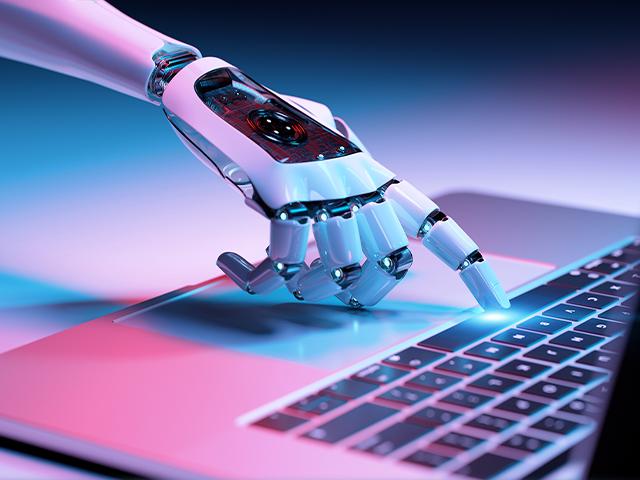In the not-so-distant past, the idea of a refrigerator sending a text message to your phone or a streetlight adjusting its brightness based on traffic flow seemed like something out of a science fiction novel. Today, these scenarios are becoming increasingly commonplace thanks to the Internet of Things (IoT), a transformative technological revolution that is reshaping our homes and cities.
The Rise of the Internet of Things
The concept of the Internet of Things can be traced back to the late 20th century when computer scientists and engineers began envisioning a world where everyday objects were connected to the Internet, communicating with each other and with us. Fast forward to the 21st century, and this vision has become a reality. IoT refers to a network of physical devices embedded with sensors, software, and connectivity, enabling them to collect and exchange data.
The growth of IoT has been exponential, driven by advancements in technology, reduced hardware costs, and the increasing demand for connectivity. Today, IoT devices are found in various domains, from healthcare and agriculture to transportation and energy management. However, one of the most profound impacts of IoT is on our homes and cities.
Transforming Our Homes
Smart Homes
The concept of a smart home, once a luxury reserved for the tech-savvy and wealthy, has become more accessible and affordable, thanks to IoT. Smart homes are equipped with interconnected devices that allow homeowners to control and automate various aspects of their living spaces. Here are some ways IoT is transforming our homes:
1. Home Security
IoT-powered security systems have become a staple in modern homes. Smart cameras, motion detectors, and doorbell cameras can send real-time alerts to homeowners’ smartphones, allowing them to monitor and secure their properties remotely.
2. Energy Efficiency
IoT thermostats and smart lighting systems can optimize energy consumption by adjusting settings based on occupancy and external factors. This not only reduces energy bills but also contributes to a greener planet.
3. Home Entertainment
Voice-activated assistants like Amazon’s Alexa and Google Assistant have brought convenience to home entertainment. IoT devices can control smart TVs, speakers, and even kitchen appliances, providing seamless integration and a more enjoyable living experience.
4. Health and Wellness
IoT-enabled wearable devices and health monitors can help individuals track their fitness goals and monitor their health conditions. These devices can transmit vital data to healthcare professionals, enabling early intervention and personalized care.
Personalized Experiences
IoT is making our homes more personalized and adaptive to our preferences. Smart thermostats learn our temperature preferences and adjust accordingly. Smart fridges keep track of our groceries and suggest recipes based on what’s inside. These personalized experiences not only make life more convenient but also reduce waste and improve efficiency.

Enhancing Urban Living
Beyond our homes, IoT is also reshaping the way we live in cities and urban environments.
1. Smart Transportation
IoT is revolutionizing transportation in cities. Smart traffic management systems use real-time data from sensors embedded in roads and vehicles to optimize traffic flow and reduce congestion. Public transportation systems are becoming more efficient, with smart cards and mobile apps providing real-time updates and payment options.
2. Environmental Sustainability
Cities are using IoT to monitor air quality, water quality, and energy consumption. This data helps governments and organizations make informed decisions to reduce pollution, conserve resources, and create sustainable urban environments.
3. Healthcare Services
IoT is improving access to healthcare in cities. Telemedicine and remote patient monitoring enable healthcare providers to reach underserved urban populations and provide better care to patients with chronic conditions.
4. Safety and Security
IoT-powered surveillance systems, combined with facial recognition technology, are enhancing urban safety. These systems can help law enforcement agencies respond to emergencies more effectively and reduce crime rates.
Challenges and Considerations
While IoT holds incredible promise, it also comes with challenges and considerations that must be addressed. Privacy and security are paramount concerns, as the collection and sharing of data by IoT devices can lead to vulnerabilities and invasions of privacy. Ensuring robust cybersecurity measures and clear data privacy regulations are essential.
Additionally, the proliferation of IoT devices raises questions about interoperability and standardization. As more devices are connected, it becomes increasingly important for them to work seamlessly together. Industry standards and protocols will play a crucial role in addressing this challenge.
The Future of IoT
As technology continues to advance, the Internet of Things will only become more deeply ingrained in our daily lives. We can expect further innovations in IoT devices and applications, from autonomous vehicles and smart cities to advanced healthcare solutions and personalized shopping experiences. Come and visit http://corporateartloan.org/ to find additional tips and information about technology.
In conclusion, the Internet of Things is transforming our homes and cities in remarkable ways. It has made our homes smarter, more efficient, and more personalized. In urban environments, IoT is enhancing transportation, sustainability, healthcare, and safety. However, as we embrace this transformative technology, we must also be vigilant in addressing privacy, security, and interoperability challenges to fully harness its potential. The future promises an exciting world where IoT seamlessly integrates into every aspect of our lives, making our homes and cities more connected, efficient, and livable.





